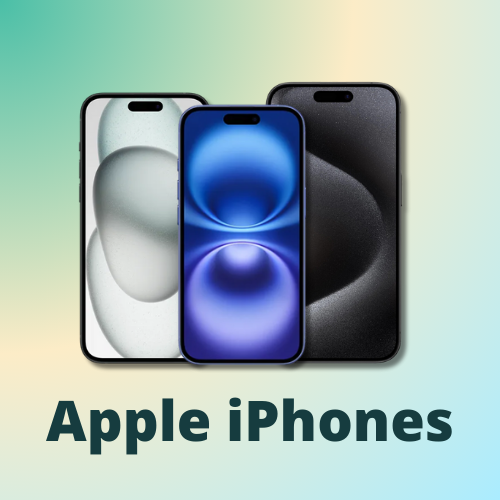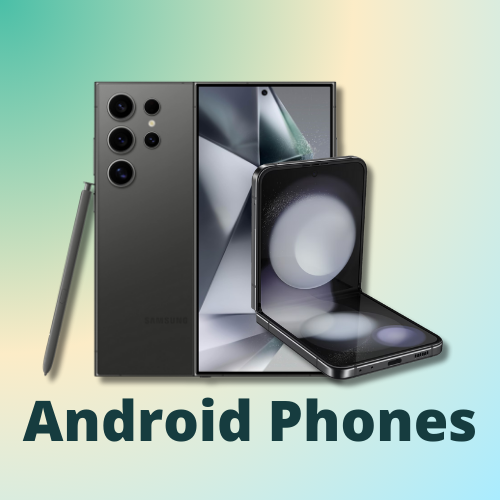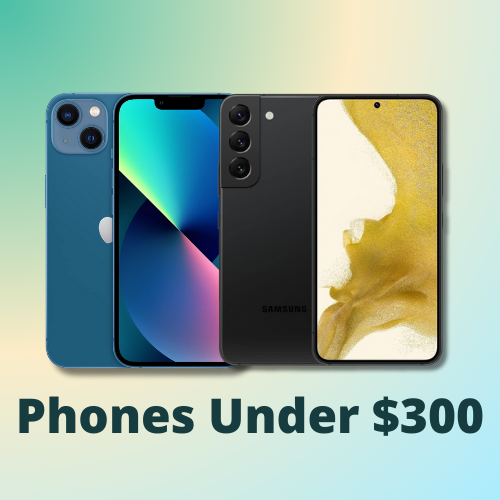Comparing the iPhone Xs and iPhone 13
Apple has always been a leader in the smartphone industry, consistently pushing the boundaries of innovation. With every new release, they manage to create excitement among tech enthusiasts and loyal customers alike. In this article, we will take an in-depth look at the iPhone Xs and the iPhone 13, two flagship models that have taken the market by storm.
Introduction to iPhone Xs and iPhone 13
Let's start by introducing the two devices that we'll be comparing today: the iPhone Xs and the iPhone 13. The iPhone Xs was released in 2018 and was a significant upgrade over its predecessor. Packed with cutting-edge technology and boasting a sleek design, it quickly became a favorite among iPhone enthusiasts.
Fast forward to 2021, and Apple unleashed the iPhone 13, taking the smartphone experience to new heights. With improved features and advancements in every aspect, this device has set a new benchmark for what a flagship smartphone can achieve.
When it comes to choosing a new smartphone, it's essential to consider the key features that each device offers. In the following sections, we'll delve into the standout features of both the iPhone Xs and the iPhone 13, giving you a comprehensive understanding of what each device brings to the table.
Key Features of iPhone Xs
Before diving into the comparison, let's first highlight the key features of the iPhone Xs. This device introduced an edge-to-edge Super Retina display, which provided an immersive viewing experience like never before. Whether you're browsing the web, watching videos, or playing games, the vibrant colors and sharp details on the iPhone Xs' display make everything come to life.
Additionally, the A12 Bionic chip powering the iPhone Xs brought lightning-fast performance and enhanced machine learning capabilities to the table. This powerful chip ensures that you can seamlessly navigate through apps, switch between tasks, and enjoy lag-free gaming experiences.
Furthermore, the iPhone Xs boasted an advanced dual-camera system, enabling users to capture stunning photos and videos. With features like Smart HDR and Portrait Mode, you can effortlessly capture professional-looking shots with depth and detail. The device also featured Face ID, Apple's facial recognition technology, which made unlocking your phone both secure and effortless.
Key Features of iPhone 13
Now, let's turn our attention to the iPhone 13 and explore its standout features. One of the main attractions of the iPhone 13 is the A15 Bionic chip, which delivers exceptional speed and power. This chip takes mobile processing to a whole new level, allowing for seamless multitasking and smooth performance even with resource-intensive applications.
In terms of design, the iPhone 13 offers an array of captivating color options and a stunning Super Retina XDR display. The ProMotion technology brings a buttery-smooth 120Hz refresh rate, resulting in a more responsive and visually pleasing experience. Whether you're scrolling through social media feeds or playing graphics-intensive games, the iPhone 13's display provides an unparalleled level of smoothness and fluidity.
When it comes to photography, the iPhone 13 doesn't disappoint. With its advanced camera system, you can capture breathtaking photos and videos in any lighting condition. The improved Night mode ensures that even in low-light environments, your shots will be clear and detailed. Additionally, the new Cinematic mode allows you to create professional-quality videos with depth-of-field effects, adding a touch of cinematic magic to your memories.
Another notable feature of the iPhone 13 is its enhanced battery life. With optimizations in both hardware and software, the iPhone 13 can last even longer on a single charge. Whether you're streaming your favorite shows, playing games, or working on important tasks, you can rely on the iPhone 13 to keep up with your demands throughout the day.
In conclusion, both the iPhone Xs and the iPhone 13 offer impressive features and capabilities. Whether you're looking for a device that excels in photography, performance, or display quality, both options have something to offer. It ultimately comes down to your personal preferences and priorities. So, take your time, explore the options, and choose the iPhone that best suits your needs.
Design and Aesthetics
The design of a smartphone plays a crucial role in attracting consumers. Both the iPhone Xs and the iPhone 13 excel in this department, but they do have some notable differences.
When it comes to physical design, the iPhone Xs featured a stainless steel frame and a glass back, exuding a premium look and feel. Its sleek and slim profile made it comfortable to hold, while the edge-to-edge display made for an immersive viewing experience.
On the other hand, the iPhone 13 retains the classic design language introduced with the iPhone X but comes with a more durable Ceramic Shield front cover, offering improved drop protection. The flat-edge design gives it a distinct look, while the matte finish on the back adds to its elegance.
In addition to the physical design, the placement of buttons and ports also contributes to the overall aesthetics of these smartphones. The iPhone Xs had its power button on the right side, along with the volume buttons and the silent switch. The Lightning port was located at the bottom, flanked by the speaker grilles.
With the iPhone 13, Apple has made some changes to the button layout. The power button has been moved slightly lower on the right side, making it more accessible for one-handed use. The volume buttons and the silent switch remain in the same position. However, the Lightning port has been replaced with a USB-C port, allowing for faster charging and data transfer.
Screen Size and Display Quality
Screen size and display quality are crucial factors to consider when comparing these two smartphones.
The iPhone Xs featured a 5.8-inch Super Retina OLED display with a resolution of 2436 x 1125 pixels. This display offered excellent color accuracy and deep blacks, making content consumption a visually engaging experience.
Now, with the iPhone 13, users can enjoy an even larger 6.1-inch Super Retina XDR display. This display not only offers improved brightness and contrast but also supports HDR content, providing a more immersive and lifelike viewing experience.
Furthermore, the iPhone 13's display features ProMotion technology, which allows for a smoother and more responsive touch experience. With a 120Hz refresh rate, scrolling through apps and websites feels incredibly fluid, enhancing the overall user experience.
In terms of display protection, both the iPhone Xs and the iPhone 13 come with a layer of scratch-resistant glass. However, the iPhone 13's Ceramic Shield front cover provides added durability, making it more resistant to accidental drops and impacts.
Whether you're watching movies, playing games, or simply browsing the web, the larger and more vibrant display of the iPhone 13 undoubtedly enhances the visual experience, making it a compelling choice for multimedia enthusiasts.
Performance and Speed
Performance and speed are essential aspects to consider when comparing these flagship devices. In this section, we will delve deeper into the processor comparison and battery life of the iPhone Xs and iPhone 13.
Processor Comparison
The A12 Bionic chip in the iPhone Xs was groundbreaking at the time of its release, offering immense processing power. It seamlessly handled resource-intensive tasks and provided a smooth user experience. The A12 Bionic also brought significant advancements in machine learning capabilities, enhancing various features of the device.
But Apple didn't stop there. With the iPhone 13, they took performance to the next level with the A15 Bionic chip. This chip boasts a 6-core CPU and a 16-core Neural Engine, enabling lightning-fast speeds and unparalleled machine learning capabilities. Whether you're multitasking, gaming, or using demanding applications, the iPhone 13 can handle it all with ease.
Thanks to the A15 Bionic chip, the iPhone 13 offers improved graphics performance, allowing for more immersive gaming experiences and smoother video playback. The device also benefits from enhanced power efficiency, ensuring that you can enjoy all these features without sacrificing battery life.
Battery Life and Charging Speed
Having a reliable battery life is essential for any smartphone user, and this is an area where both the iPhone Xs and iPhone 13 excel.
The iPhone Xs provided all-day battery life, ensuring that you could stay connected and use your device for extended periods without worrying about running out of charge. Additionally, it supported wireless charging, making it convenient for users to top up their device without the hassle of cables.
But Apple didn't settle for just all-day battery life. With the iPhone 13, they have further improved battery life, allowing users to get through a full day of usage with ease. Whether you're streaming videos, browsing the web, or playing games, the iPhone 13's battery will keep up with your demands.
Moreover, the device supports MagSafe charging, which not only provides a fast and efficient charging experience but also opens up a world of accessories that can be magnetically attached to the back of the device. From wallets to cases to mounts, MagSafe accessories offer a seamless and convenient way to enhance your iPhone 13 experience.
With the iPhone 13, you can say goodbye to the hassle of tangled cables and enjoy the freedom of wireless charging. Simply place your device on a MagSafe charger, and it will start charging effortlessly.
In conclusion, the iPhone Xs and iPhone 13 both excel in terms of performance and speed. The A12 Bionic chip in the iPhone Xs was groundbreaking at the time, but the A15 Bionic chip in the iPhone 13 takes it to a whole new level. Additionally, both devices offer impressive battery life and convenient charging options. Whether you choose the iPhone Xs or the iPhone 13, you can be confident that you'll have a device that delivers exceptional performance and keeps up with your daily needs.
Camera Capabilities
For many users, the camera is one of the most critical factors when choosing a smartphone.
Photo and Video Quality
The iPhone Xs featured a powerful dual-camera system, consisting of a 12-megapixel wide lens and a 12-megapixel telephoto lens. This setup allowed users to capture stunning photos with vibrant colors and exceptional detail. It also gave users the ability to take portrait shots with the iconic blurred background effect.
With the iPhone 13, Apple has taken camera capabilities to the next level. The device comes equipped with an advanced dual-camera system that includes sensor-shift optical image stabilization for both the wide and ultra-wide lenses. This technology ensures that your photos and videos are incredibly sharp and stable, even in challenging lighting conditions.
Additional Camera Features
Both the iPhone Xs and the iPhone 13 offer a range of additional camera features to enhance your photography experience.
The iPhone Xs introduced Smart HDR, which combined multiple exposures to capture more detail and dynamic range in your photos. It also offered an impressive Portrait Mode with advanced depth control, giving users the freedom to adjust the level of background blur in their portrait shots.
With the iPhone 13, Apple introduced Photographic Styles, allowing users to personalize the look of their photos with different styles and tones. Additionally, the device comes with Night mode, ensuring that you can capture stunning low-light shots with incredible detail and minimal noise.
Software and User Experience
Software plays a vital role in the overall user experience of a smartphone.
Operating System Differences
The iPhone Xs originally shipped with iOS 12, providing a seamless and intuitive user interface. Over the years, Apple has continued to release software updates, bringing new features and improvements to the device.
The iPhone 13, on the other hand, comes with the latest iteration of Apple's operating system, iOS 15. This update introduces new features such as Focus mode, enhanced FaceTime capabilities, and redesigned notifications, all aimed at improving productivity and user experience.
User Interface and Navigation
Both the iPhone Xs and the iPhone 13 offer a user-friendly interface and intuitive navigation gestures.
The iPhone Xs introduced Face ID, which revolutionized biometric authentication on smartphones. With just a glance, users could unlock their device, authenticate payments, and access secure apps. The intuitive gestures introduced with the iPhone Xs made navigating the device a breeze.
The iPhone 13 continues to use Face ID, ensuring secure and convenient authentication. Additionally, it comes with improved gestures and accessibility features, making it easier than ever to navigate and interact with your device.
Conclusion
After a thorough comparison, it's clear that both the iPhone Xs and the iPhone 13 have their unique strengths and features. The iPhone Xs is a powerhouse that offers remarkable performance, an exceptional camera, and a sleek design. On the other hand, the iPhone 13 takes things up a notch with its blazing-fast speed, improved camera capabilities, and enhanced user experience.
Ultimately, the choice between the iPhone Xs and the iPhone 13 comes down to personal preferences and priorities. Whether you're someone who values cutting-edge technology or seeks the latest and greatest features, both devices are excellent options that showcase Apple's commitment to innovation.
So, whether you choose the iPhone Xs or the iPhone 13, you can be confident that you'll be getting a premium smartphone experience that is sure to impress.







